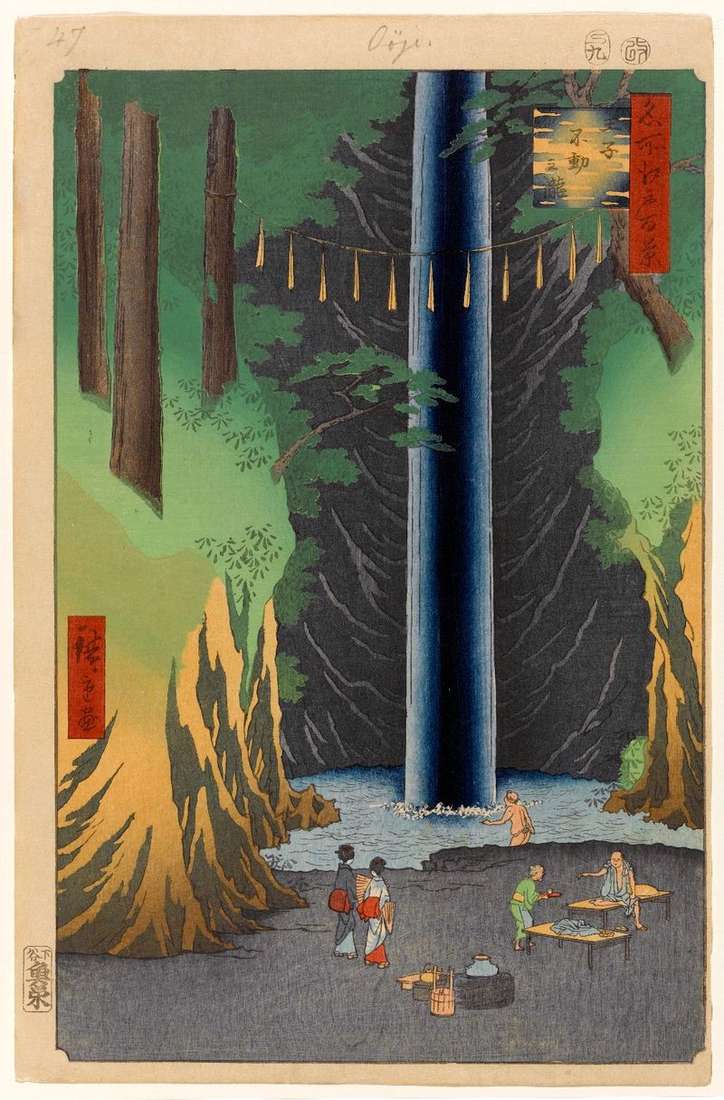
The rise from the Ueno mountains to the Asakusa mountain suddenly breaks off, and from this precipice the river Syakudzigawa flows. Between the two heights a ravine is formed. On the banks of the river there are steep cliffs along which several waterfalls fell into the river. Therefore, the river Syakudzigava in this area was called a river-waterfall. On the right bank of the river was the Shojiuin Temple, behind it was the descent to the river Syakudzigava, where the waterfall Senri was located, next to it – a cave. She was associated with the god Fudomeo, so the waterfall was nicknamed Fudo-but.
There was a custom to perform a ritual ablution in this waterfall. In the vicinity of this waterfall, as if in the depths of the tunnel, the cave and rocks were covered with moss. Here, at the cascade, even in the summer heat, there was always a coolness. The waterfall fell from a great height, and when a drop of water fell, it broke into small splashes, as if it were raining. Hiroshige painted people bathering in the waterfall, and the waterfall itself pictured like a huge tree, giving it power and monumentality, but somewhat exaggerating its size. Against the background of a wide blue band of a flowing waterfall, in the second variant of the engraving a hanging rope with woven strips of paper is clearly visible, enclosing the place of the presence of the Kami – Shinto deity. The square cartouche has also changed.
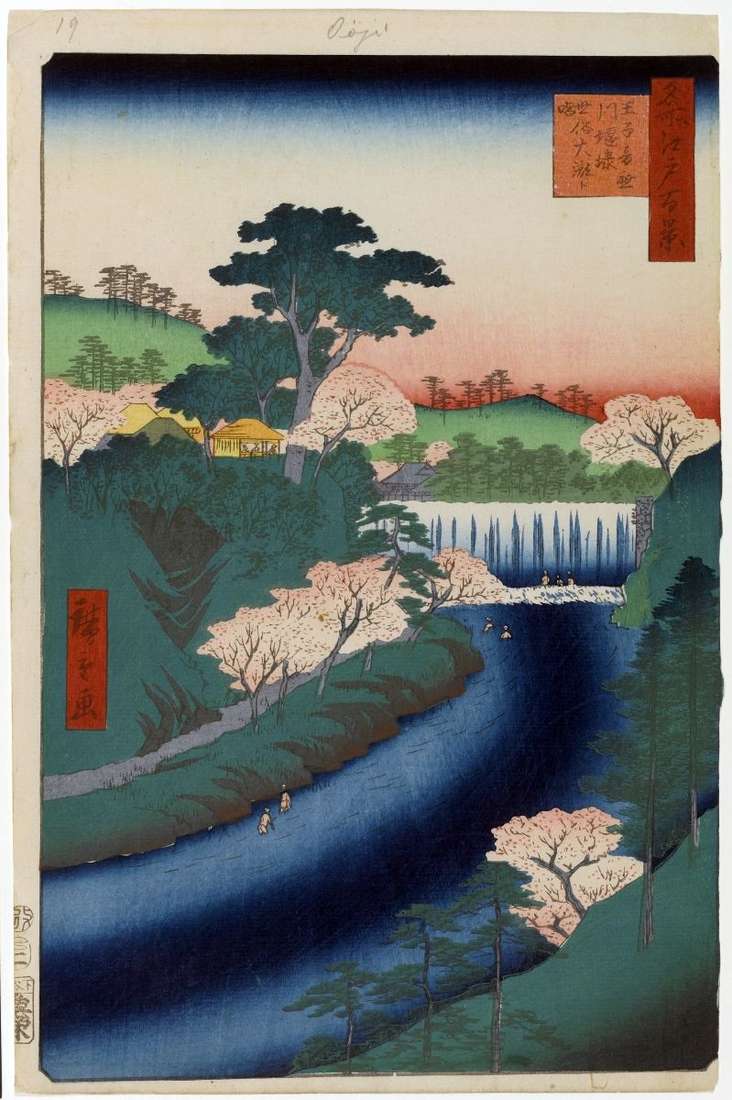 Dam on the Otonasigawa River in Ojzi by Utagawa Hiroshige
Dam on the Otonasigawa River in Ojzi by Utagawa Hiroshige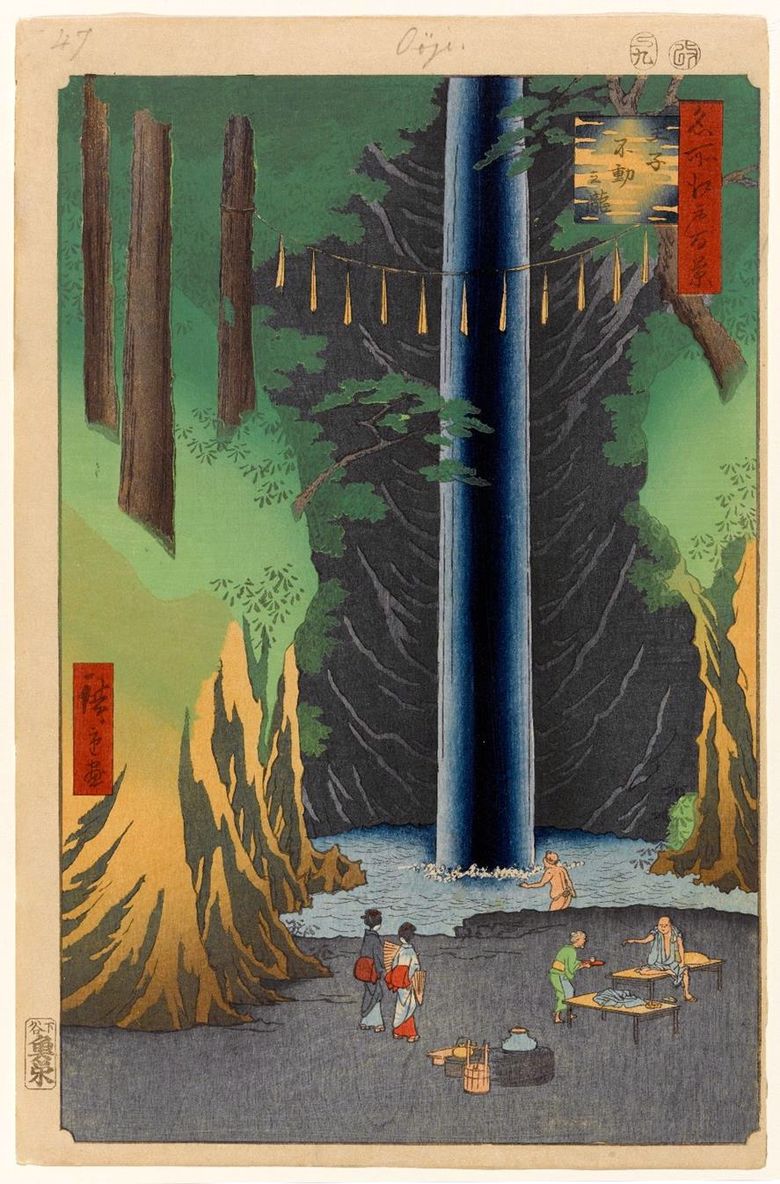 Fudo-no-waterfall à Oji – Utagawa Hiroshige
Fudo-no-waterfall à Oji – Utagawa Hiroshige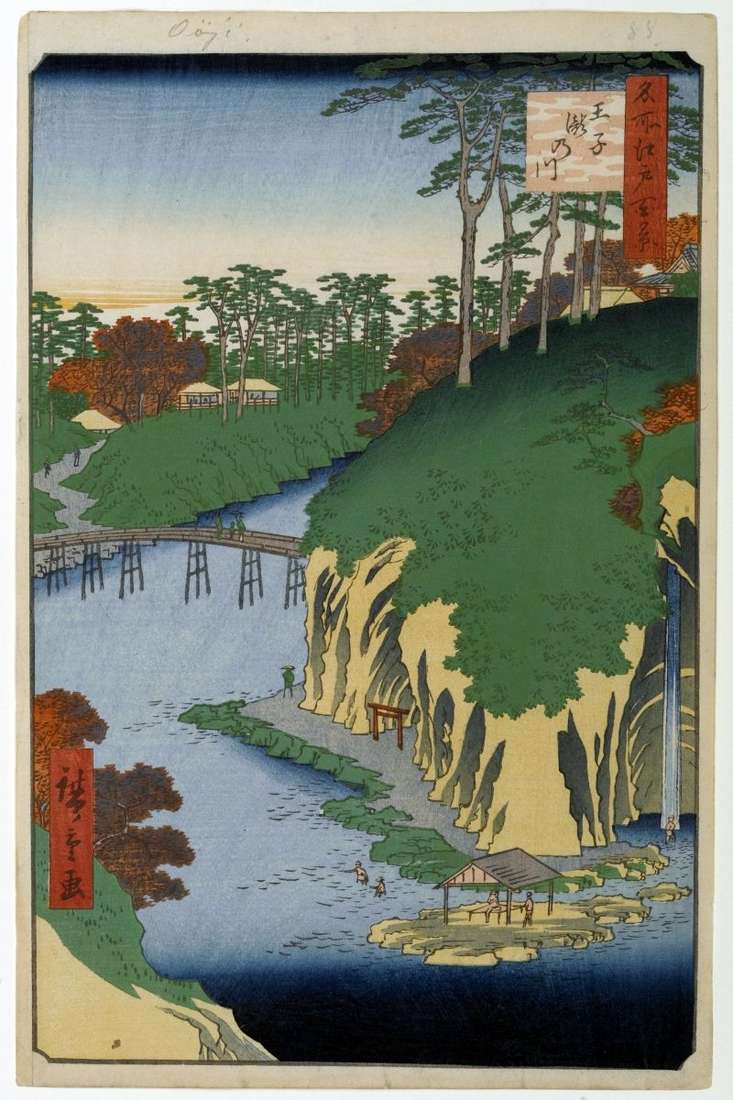 Takinogawa in Odzi by Utagawa Hiroshige
Takinogawa in Odzi by Utagawa Hiroshige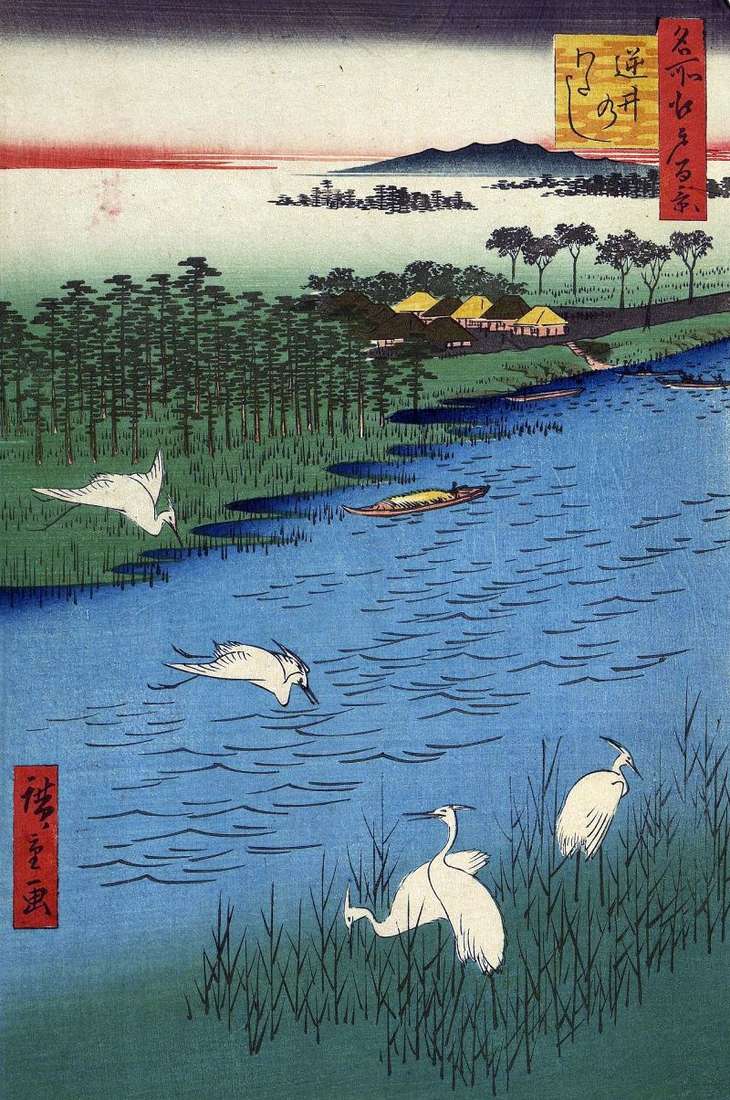 Sakasai crossing by Utagawa Hiroshige
Sakasai crossing by Utagawa Hiroshige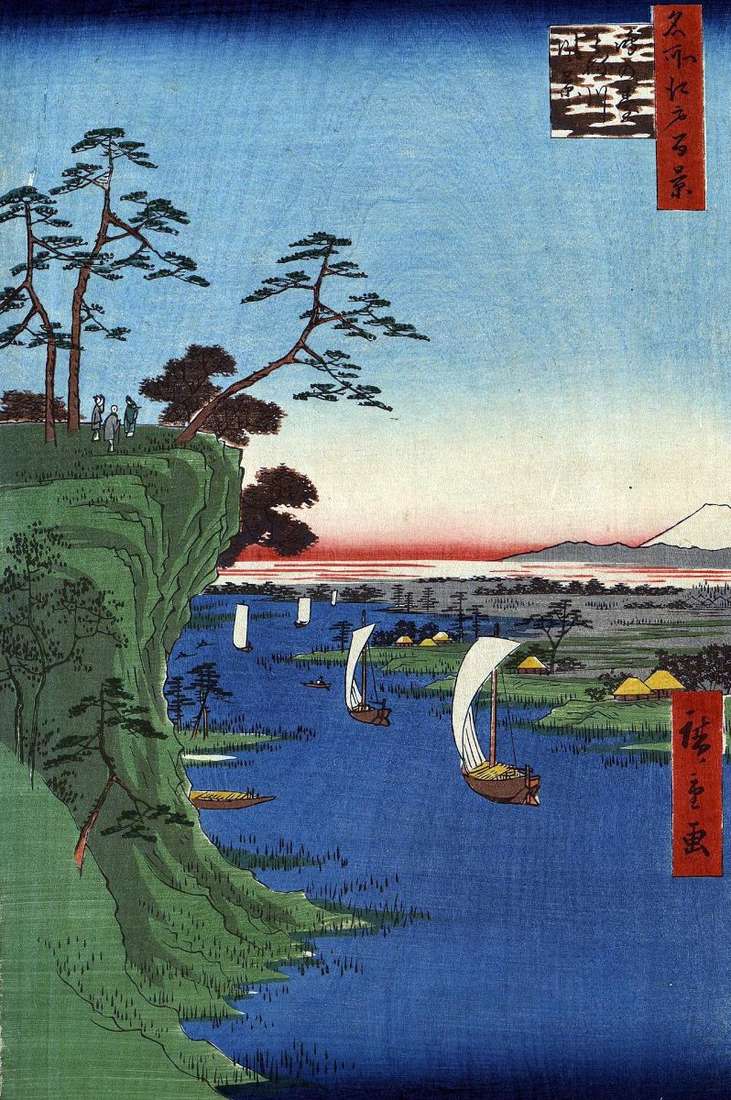 Konodai Hill, Tonegawa River by Utagawa Hiroshige
Konodai Hill, Tonegawa River by Utagawa Hiroshige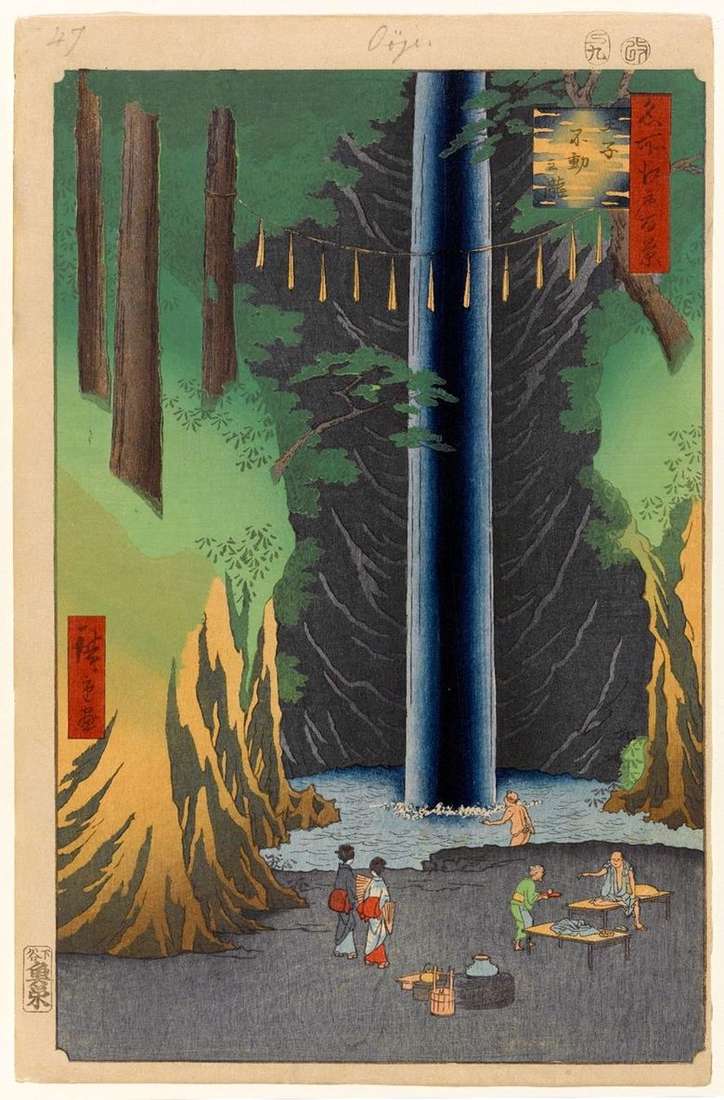 Cascada de Fudo, pero aún en Oji – Utagawa Hiroshige
Cascada de Fudo, pero aún en Oji – Utagawa Hiroshige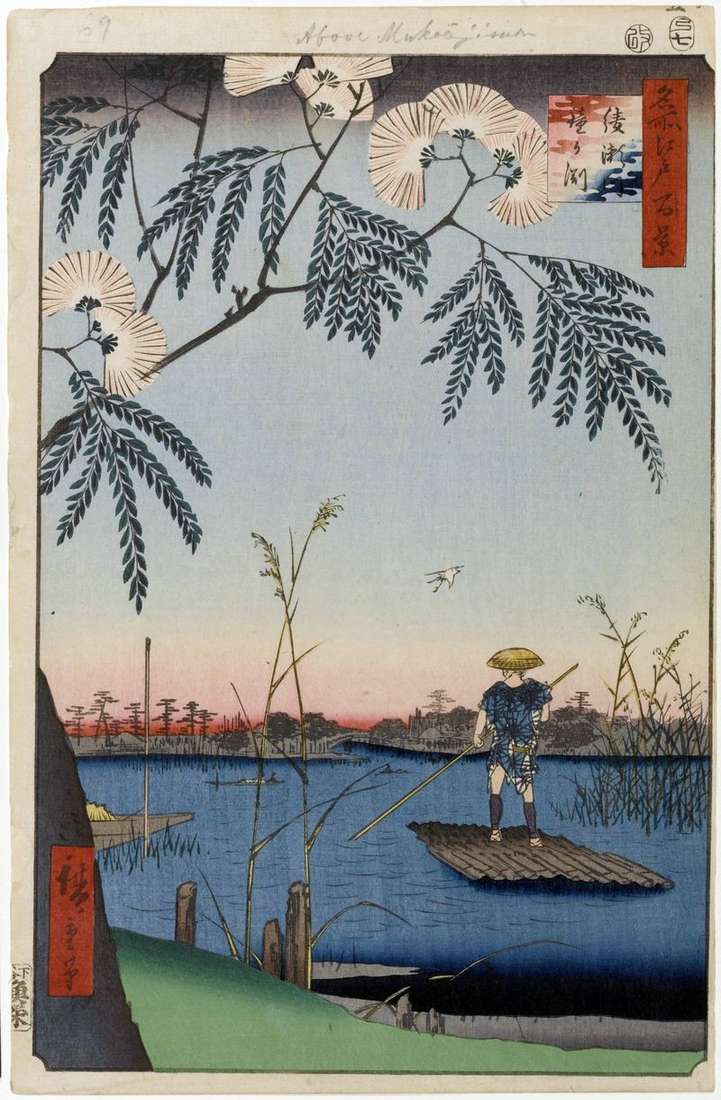 The Ayasagawa River, “The Bell’s Bell” by Utagawa Hiroshige
The Ayasagawa River, “The Bell’s Bell” by Utagawa Hiroshige The Ohashi Bridge in Senju by Utagawa Hiroshige
The Ohashi Bridge in Senju by Utagawa Hiroshige